Gardening is one of the many uses of Epsom salt, a compound made up of magnesium sulfate especially for tomato crops. Magnesium and sulfur deficiencies can be reversed through increasing plant growth, bettering fruit development and fighting off those common diseases. Tomato plants that are healthy and produce an abundance of quality harvests are mainly achieved through inclusion of Epsom salt in your gardening schedule. This guide will set out step by step instructions on how to successfully use Epsom salt with tomato plants focusing on its advantages, how it should be used as well as critical stages when plant productivity is at peak.
Why Use Epsom Salt for Tomato Plants?
The primary reason why Epsom salt is used for tomato plants is because it contains high amounts of magnesium and sulphur which are essential nutrients that have a significant role in plant physiology. Magnesium is important for photosynthesis, the process by which plants convert light energy into chemical energy and it also helps to make chlorophyll. Sulphur is an important constituent of certain amino acids and proteins necessary for plant growth and enzyme function. By adding Epsom salts to soil, gardeners can prevent or correct a lack of magnesium in soil, manifested as yellowing leaves or stunted growth; they will also ensure that these vegetables receive enough sulphur for proper development and fruit formation.
What do tomato plants gain from Epsom salts?
Tomato plants get several benefits from using Epsom salts. It provides an easily accessible source of magnesium which aids in photosynthesis thereby promoting overall energy metabolism of the plant. In this manner, the provision ensures production of more chlorophyll required for increased development. Additionally, the sulphas in Epsom salts assist in the synthesis of crucial amino acids and structural proteins thus creating strong cell walls together with effective enzymes systems. Consequently, improved chlorophyll content leads to strong cells that absorb more nutrients thus healthier tomatoes as well as higher yields. Additionally, consistent use may alleviate deficiencies common among most soils producing fuller foliage and larger tastier fruits.
How Does Magnesium Help Tomato Growth?
As a central atom within its molecule, Magnesium acts as one of the key constituents responsible for capturing light energy by plants during photosynthesis process where such chemical formates are converted fully into carbohydrates vital to every plant’s growth cycle. Moreover, Magnesium acts directly on DNA-RNA synthesizing enzymatic systems including those elements like Mg involved in its synthesis thereby support overall metabolism through these pathways. Therefore having sufficient magnesium makes sure that tomato crops maintain strong growth supported by effective carbohydrate metabolism, lush leaves and abundant fruits.
Can Epsom Salt Prevent Blossom End Rot?
Blossom end rot in tomatoes is primarily caused by a deficiency of calcium which results in the breakdown of cell walls within the fruit. For example, magnesium and sulphur are present in Epsom salt but not calcium thus making it incapable of preventing blossom end rot itself. Nevertheless, using Epsom salt could indirectly help achieve this aim by absorbing enough other nutrients. By having a balance between various nutrients up taken it would keep these plants healthier therefore enabling tomato crops to take up more soil-born calcium into their tissues. Thus while it does not prevent blossom end rot itself, adding more Epsom salts can improve the plant’s nutrient environment.
How to Apply Epsom Salt to Tomato Plants?
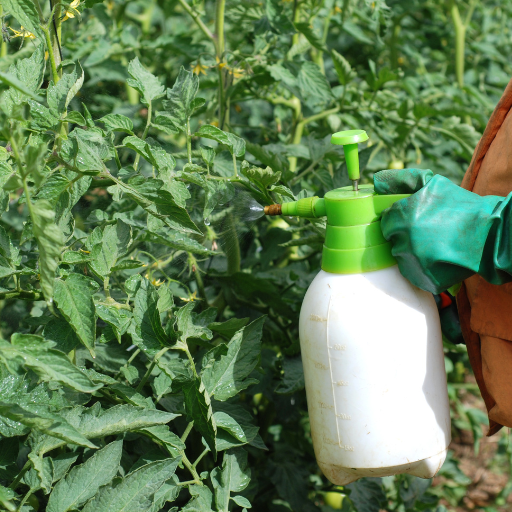
To apply Epsom salt to tomato plants, dissolve one to two tablespoons of Epsom salt in a gallon of water. The solution can be used as a foliar spray or soil drench. For foliar applications, liberally spray the solution onto the leaves and stems every two weeks to ensure that plants get an even coating. In addition, soaking each tomato plant’s base with Epsom solution occurs at biweekly intervals during soil application. Furthermore, at planting stage add one tablespoonful of Epsom salt into the dirt in each hole for growing tomatoes. It does promote intake of nutrients and overall development of crops.
What is the best way to mix Epsom Salt into the Soil?
To incorporate Epsom Salt efficiently into soil, first work it in before planting. Mix one tablespoonful of Epsom salt with soil in each hole for planting so that they are accessible via roots from early stages of growth. For a grown plant already in the ground this may involve dissolving 1-2 tablespoonsfuls of Epson’s salts per gallon or watering it around its base then leave dry Epson salts on its surface while then pouring enough water onto it . This helps maintain magnesium and sulfur contents at constant levels hence encouraging better nutrient absorption hence stronger plant formation and development. Repeat every 4-6 weeks throughout the season for maintenance purposes.
How Can You Apply Epsom Salt as Foliar Spray?
When applying epsom salt as foliar spray you need to make sure your formula is right; dissolve 1-2 tablespoons epsom salts in warm water also approximately a gallon. Through this way the salt will properly dissolve thereby improving efficiency during spraying periods.Spray on leaf surfaces twice weekly when sun is not directly shining upon them possibly early morning hours.The aim here would be that all leach become thoroughly coated but without coming out completely through spraying.This should be done after every two weeks for best results.
- Epsom Salt Concentration: 1-2 tablespoons per gallon of water (ensures adequate magnesium and sulfur supply without over-fertilizing)
- Application Frequency: Every two weeks (to maintain consistent nutrient availability)
- Optimal Application Time: Early morning or late evening (prevents leaf burn due to sunlight exposure)
- Application Method: Even foliar coating (ensures all plant parts receive nutrients)
- Water Temperature: Warm (improves solubility of Epsom salt)
These parameters are meant to boost nutrient uptake while ensuring the productivity and health of tomato plants.
How Much Epsom Salt Should I Use per Gallon of Water?
Ideally, one to two tablespoons of Epsom salts per every gallon of water should be used on tomato plants. This concentration provides the right amount of magnesium and sulfur for plant growth and nutrient absorption. Normally, it is enough to use one tablespoon per gallon of water for tomatoes, though if deficiencies arise two tablespoons are recommended. With this dosage, enough nutrients will reach the plant without over-fertilizing it. Consequently, regularly using it based on the direction above will yield tomatoes that are healthier and more productive.
When Should You Use Epsom Salt for Tomatoes?

There is a need to use Epsom salt when it shows that the tomato plants lack magnesium, such as having yellow leaves with green veins. This is particularly helpful during the time of growth season where fruits start ripening as magnesium plays a big role in chlorophyll formation and even overall health of plant tissue. In addition, one can apply Epsom salts immediately after transplanting so as to eliminate or reduce initial shock while improving plant growth rates. Furthermore, applying Epsom salt every two weeks throughout the growing season will ensure tomatoes receive consistent supply of necessary nutrients that lead to high yields and better quality produce.
When should I apply Epsom Salt for Germination?
At which point does one need to introduce the Epsom salt into the soil for germination? By introducing the Epsom salt at this time, it will improve early seedling growth by providing an instantly available source of magnesium. One may do this by adding one tablespoonful of Epsom salt into their planting hole or add them just after putting your seeds in water. Also applying Epsom salts helps in establishing strong root systems and this enables proper assimilation of nutrients which eventually leads into healthy seedlings.
Does Epsom Salt Work For The Entire Growing Season?
Can you use Epsom salts on plants while they are still growing? Yes, it can be used on tomatoes during their period of growth. Its incorporation at this stage aims at mitigating magnesium deficiency symptoms that may result in improved chlorophyll production hence better overall health condition of plants’ tissues generally. Mix a solution comprising one tablespoonful per gallon with bi-weekly applications for desirable results. Consequently, constant infusion boosts robustness and fruit yield maximization besides reducing blossom-end rot incidences.
How Frequent Should I Apply Epson Salt?
How often should i be using epsomsalt? Generally speaking, you should apply one table-spoonful of the Epsom salt for every gallon you use in watering your plants once in two weeks over the growing period. This can be increased to once a day if there is magnesium deficiency as indicated by yellowing leaves and stunted growth. Another suggestion made by some gardeners is that they add Epsom salts into their soils when planting tomatoes, and continued at regular intervals throughout the year for best plant health and productivity.
What Are the Indications of Magnesium Deficiency in Tomato Plants?
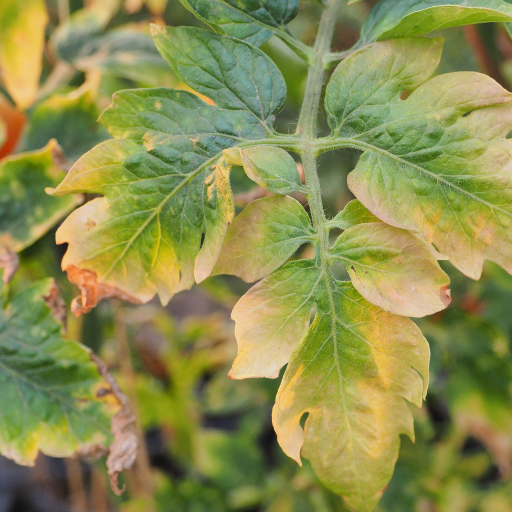
Indication of magnesium deficiency in tomato plants is mainly by interveinal chlorosis, which means yellowing between the veins of leaves, while the veins themselves stay green. In tomatoes, this situation often commences at older leaves and gets worse with progression. Moreover, necrotic regions might be visible on affected leaflets leading to curling or dropping off finally. Furthermore, plants that lack magnesium usually have a slow growth rate and low yields because magnesium is necessary for chlorophyll synthesis and photosynthesis. Regular checking and immediate use of Epsom salt as magnesium supplements can also help minimize such signs.
How do you know Epsom salt deficiency symptoms?
The symptoms of epsom salt deficiency involve particular signs in plants that show insufficient magnesium and sulfur levels. This nutrient provides vital components for the health of plants.
- Interveinal Chlorosis: The most outstanding sign here is that leaves become yellow between veins while veins still remain green. This symptom usually occurs first on older leaves.
- Leaf Curling and Necrotic Spots: Plants deficient in magnesium may have curled leaves with brown or necrotic spots. This indicates severe magnesium deficiency since chlorophyll cannot be formed without sufficient amounts of magnesium, which is essential for chlorophyll production and photosynthesis.
- Stunted Growth and Reduced Yield: Lack of Epsom salt affects plants by reducing their size due to slow process of photosynthesis. The result is that plants become smaller in size resulting to significantly reduced fruit or vegetable yield.
- Purpling of Leaves: Some magnesium-deficient crops show leaf purpling due to increased accumulation of anthocyanin pigments.
- Technical Parameters:
- Magnesium (Mg): This mineral is needed for synthesis of chlorophyll as well as activation of enzymes. That means that soil with levels ranging from 25-50 ppm would contain adequate magnesium supplies.
- Sulfur (S): Besides protein synthesis, this element participates in formation of chlorophyll. Hence, it should be maintained at the level 20-40 ppm in the soil.
Through regular soil testing and monitoring these symptoms above listed before, it will be possible to decide whether Epsom salt needs to be supplemented or not; therefore one can expect healthy productive plants.
What Happens When Tomato Plants Don’t Get Enough Magnesium?
A lack of magnesium in tomato plants may lead to a number of serious problems significantly affecting the plant and the quality of its fruit, including interveinal chlorosis that is characterized by the appearance of yellow patches between the veins with the veins remaining green. This normally starts from the oldest leaves, which can extent as the deficiency progresses. Additionally, affected plants may curl their leaves or show necrotic spots, which is indicative of severe magnesium stress. Chlorophyll requires magnesium as its important constituent and its absence directly limits photosynthesis in plants.
Another effect this deficiency has on plant growth is stunted development leading to decreased crop production. Although it might seem insignificant, magnesium plays an essential role in many enzyme processes within a plant and when it is not available they become dysfunctional resulting in small and less vigorous plants that yield greatly reduced fruits. Severe cases may be accompanied by purple foliage owing to anthocyanin pigment accumulation in cells and tissues.
For tomato plants, soil magnesium should range between 25-50 ppm. Regular soil testing helps farmers monitor nutrient levels hence identify deficiencies before they significantly affect plant health. By promptly taking necessary steps like application of Epsom salt for mitigating this deficiency one can ensure that his/her tomatoes remain robustly healthy and productive.
Will an Overdose of Epsom Salt Hurt?
While Epsom salt (magnesium sulfate) generally acts as a good source for curing magnesium deficiencies among different types of crops, such treatment can turn into poisoning if taken at high doses. The excessive application rates for Epsom salt create imbalances in soil nutrients with calcium and potassium being compromised that are supposedly indispensable nutrients for any crop species healthiness. Salinity levels will also rise above acceptable threshold values thereby causing osmotic stress interfering with water absorption through root systems within which case soils acquire new salts reducing their permeability towards water. Accordingly, there may be such symptoms as leaf scorch in which the edges of leaves turn brown or black and then completely die off. In order to protect tomatoes from these problems it is necessary to observe the recommended dosages and frequency of using Epsom salt ensuring that tomato plants have balanced conditions for their growth.
Can Epsom Salt Be Combined with Other Fertilizers?
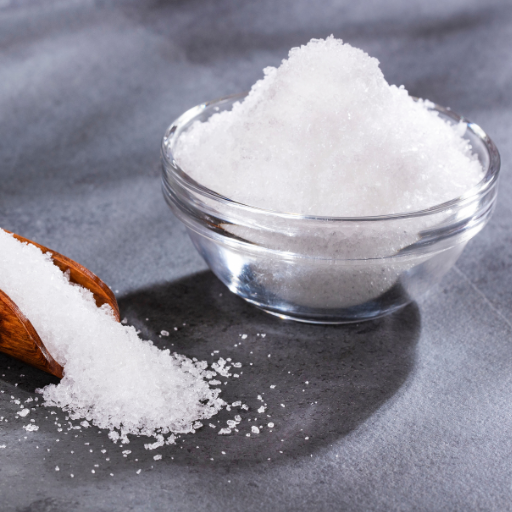
Certainly, Epsom salt can be mixed with other fertilizers. They offer a balanced nutrient profile necessary for good plant development when used together. Epsom salt is useful in addressing deficiencies not remedied by regular fertilizers because it contains magnesium and sulfur. Nevertheless, it is important to ensure the sum of nutrients applied does not exceed recommended levels as doing this may result in imbalances and harm the plants. Therefore, when adding Epsom salt to other fertilizers, one must exercise caution depending on soil tests results so as to effectively customize what should be added.
Can I Mix Epsom Salt with Other Fertilizers for Tomatoes?
For tomatoes, mixing epsom salt with other fertilizers is mostly okay if carried out properly. By supplementing the tomato plants’ nutrient profiles with magnesium and sulphur, epsom salt enhances their growth and fruit quality too. Still, do not overdo it. This way combining of other fertilisers with epsom salts without surpassing the recommended nutrient levels ensure a balanced diet for all plants without any risks of nutrient imbalance or toxicity. Application rates must thus be guided by considering soil test results and following recommendations given by agriculture specialists for maintaining healthy plants at all times.
Which Nutrients Should Combine for Optimal Tomato Growth?
In order to have good or optimal tomato growth, several important nutrients must be combined in the right proportions. Tomatoes require a balanced supply of macronutrients including nitrogen (N), phosphorus (P), and potassium (K). These macronutrients can be provided through various fertilizers:
- Nitrogen (N): It is essential for vegetative development. This promotes the growth of leaves and stems. A typical recommendation would be to start with a balanced fertilizer having N-P-K ratio of 10-10-10 or 5-10-10 and vary it based on plant growth as well as soil tests.
- Phosphorus (P): Essential for root growth and flowering. Phosphorus should be available at such levels that promote robust root systems and abundant fruit set. At planting time, starting fertilizers with high phosphorous content like 15-30-15 can be useful.
- Potassium (K): It is important for overall plant health, disease resistance, and fruit quality. Potassium is involved in metabolism and water regulation in tomatoes. Additional potassium sulphate or potassium nitrate can help increase the level of potassium in soils when used as supplemental fertilizers.
Secondary nutrients along with micronutrients also play a vital role:
- Calcium (Ca): Prevents blossom end rot and supports cell wall structure. Calcium nitrate (15.5-0-0 + 19% Ca) is a common source that can be directly applied into soil or used as foliar sprays.
- Magnesium (Mg): Vital for photosynthesis process. Magnesium deficiency may also be corrected by adding Epsom salt, i.e., magnesium sulfate to the soil or by foliar applications.
- Sulfur (S): Required for protein synthesis purposes only. Ammonium sulfate (21-0-0 + 24% S) is one such fertilizer that can supply sulfur alongside nitrogen.
- Micronutrients: Small amounts of elements such as iron, manganese, zinc, boron, copper, and molybdenum are required. These can be supplied through balanced micronutrient fertilizers or foliar feeds specifically formulated for tomato plants.
Soil test results should always guide optimal nutrient management based on the specific crop requirements to avoid deficiencies and toxicities. Consequently, regular monitoring with adjustments for observed plant performance ensures tomatoes receive a well-rounded nutrient profile during their growth cycle.
What Steps Should One Take in Performing Soil Tests to Adjust Fertilizer Use?
To perform a soil test, first collect samples from different areas in the garden so as to obtain a representative sample. Take a clean spade and dig a hole that is about 6-8 inches deep and take off a vertical slice of soil. Gather many samples, combine these in an unstained bucket and get out of this around one pint for testing. Afterward, air-dry the soil under room conditions then pack it as per instructions given by the facility doing the testing. Mail your sample to a well reputed soil test lab where they will measure its pH, nutrient status as well as organic matter content. When you receive them back, interpret them with the assistance of agricultural extension services or professionals who will help you determine what specific nutrients your crops require and their PH adjustment for fertilizer application suitable for soil condition thus ensuring plants have efficient nutrient uptake.
Common Mistakes to Avoid When Using Epsom Salt on Tomato Plants
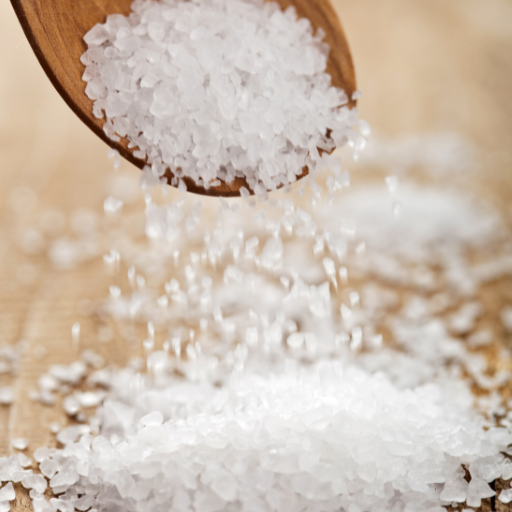
Over-use of Epsom salt is one of the biggest mistakes that horticulturists make because it may threaten soil balance through an overabundance of magnesium and sulfur content. Another mistake is not conducting a soil test before applying Epsom salts to confirm whether your soil has too little magnesium or not. Adding Epsom salts unnecessarily only serves to aggravate existing soil problems or create new ones. Lastly, many gardeners assume that this substance can rectify any plant ailment single-handedly without balancing the fertilization program and considering the role of other nutrients in plant nutrition. Such practice can lead to stunted development and reduced tomato yield.
Can Wrong Dosages Affect Plant Health?
Yes, wrong doses of Epsom salts do cause serious harm to plants. Overdosing often causes excessive sulphur and magnesium thus interfering with assimilation by other important elements including nitrogen, phosphorus, potassium and calcium. This imbalance leads to weak plants; poor photosynthesis, limited growth rate and outputs. However, below-average quantities may fail to solve underlying nutrient deficiencies, thus leaving the crops lacking some necessary minerals for their development. Therefore, farmers should follow the recommended dosage guidelines and be guided by what the result from a soil test says in order for them to have good health of their plants.
How to Correct Mistakes in Epsom Salt Application?
To correct errors made during the application of Epsom salt, start by obtaining an all-inclusive soil test so as to identify any nutrient imbalance present on your farm. Once over application is identified stop using more Epsom salt immediately but instead flush your plot with water that will remove excesses of both magnesium and sulfur available. Also introducing organic matter like composts will help bring back balance in soils by improving nutrient availability as well as retention.In cases where there has been under application adjust as per recommendations from a soil test not exceeding advised amount.As always monitoring plant responses and regular periodic soil tests will help maintain optimum levels of nutrients as well as overall plant health.
Other about Epsom Salt and Tomato Plants
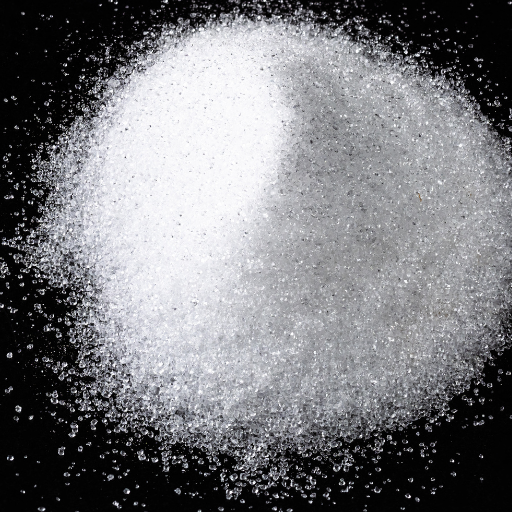
Whenever the use of Epsom salts is done in the right manner, tomato plants gets a number of benefits. The deficiency of magnesium can be sorted out with Epsom salts; hence this leads to good plant health and fruit production. To effectively use Epsom salt, mix one tablespoon with a gallon of water and apply this solution as a foliar spray or soil drench. Once every fortnight, it should be done. However, it is very important that you do not overdo it because too much magnesium can cause other nutrients that are essential for plants to stop being absorbed by the roots. Testing soils on regular basis and observing the well-being of the crop will help in determining what amount and how often.
What Is Another Option Besides Epsom Salt?
Some other alternatives for using Epsom salt include various soil additions and fertilizers containing high levels of magnesium. One example is dolomite lime which contains magnesium as well as adding calcium thus helping to balance pH levels in soils. Compost can also be used especially when rich in decomposing organic matter such as leaves rich in trace minerals necessary for plant growth which are gradually released ensuring continuous improvement of soil structure. One may also opt for worm castings which besides having minerals required by plants have useful microbes that improve soil fertility through nutrient cycling in an eco-friendly way . Finally, kelp meal from seaweed provides a multitude of trace elements, including magnesium, that promote overall healthiness.
Can You Use Epsom Salt If You Are An Organic Gardener?
In fact, some organic gardening practices allow for its application although there are others who prohibit it completely due to different reasons. It consists mainly of magnesium sulfate which occurs naturally as mineral deposits all over the world’s seas and oceans. Many organic farming methodologies and certifying bodies take advantage of its chemistry composition so as to help herbs absorb more nutrients from the ground by addressing the absence of this element found usually deficiently in soil. Epsom salt should, however, be used cautiously with proper testing of the ground to avoid disturbances in nutrient balance. This must be done adhering to specific rules on organic farming as outlined within your area of operation.
Frequently Asked Questions (FAQs)
Q: What are the benefits of using Epsom salt on tomato plants?
A: Epsom salt, or magnesium sulfate, provides essential nutrients like magnesium and sulfur which are crucial for the production of chlorophyll, supporting better plant growth. It also helps in improving soil pH, enhancing seed germination, and boosting overall plant health.
Q: How do I apply Epsom salt to my tomato plants?
A: To apply Epsom salt to tomato plants, dissolve 1 tablespoon of Epsom salt in a gallon of water. Use this solution to water the plants every two weeks during the growing season. Alternatively, you can sprinkle 1 tablespoon of Epsom salt per foot of plant height around the base and then water thoroughly.
Q: Can I use Epsom salt for other plants in my vegetable garden?
A: Yes, Epsom salt can be beneficial for many plants in your vegetable garden, especially those that are heavy feeders like tomatoes and pepper plants. It provides magnesium and sulfur, aiding in overall plant health and productivity.
Q: How does Epsom salt help with the production of chlorophyll?
A: The magnesium in Epsom salt is a vital component of chlorophyll molecules. Without adequate magnesium, plants cannot produce enough chlorophyll, leading to reduced photosynthesis and less vibrant, healthy foliage.
Q: When is the best time to apply Epsom salt to tomato plants?
A: The best time to apply Epsom salt is during planting and throughout the growing season. You can add Epsom salt to the planting hole, then continue to apply it every two weeks as a foliar spray or soil drench.
Q: How does Epsom salt affect soil pH?
A: Epsom salt is pH neutral, so it does not cause significant changes in the soil pH. This makes it safe to use in nearly any garden without worrying about altering the acidic or alkaline levels of your soil.
Q: Can Epsom salt combat common tomato plant issues?
A: Epsom salt can help alleviate magnesium deficiencies, reducing problems like blossom end rot, which is often caused by a lack of calcium and uneven moisture levels. However, it’s important to note that it should be used as a supplement to comprehensive tomato fertilizer and good gardening practices.
Q: How much Epsom salt should I use per foot of plant height?
A: A good rule of thumb is to use 1 tablespoon of Epsom salt per foot of plant height. This amount provides an adequate supply of magnesium and sulfur without over-fertilizing.
Q: Is Epsom salt safe for continuous use in my garden?
A: Yes, Epsom salt is generally safe for continuous use as long as it is applied correctly and in moderation. It is a natural mineral that supports self-sufficiency in any size backyard by providing essential nutrients that plants need.
Q: Can Epsom salt improve the growth of both tomato and pepper plants?
A: Absolutely. Both tomatoes and pepper plants benefit from the magnesium and sulfur in Epsom salt. Regularly adding Epsom salt can enhance plant cell walls, promote stronger growth, and result in healthier, more productive plants.






